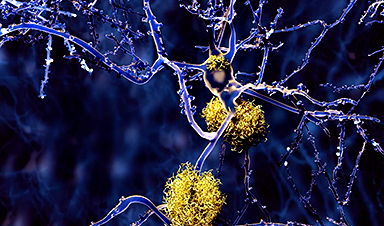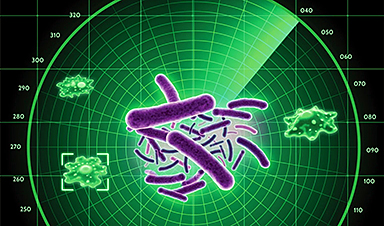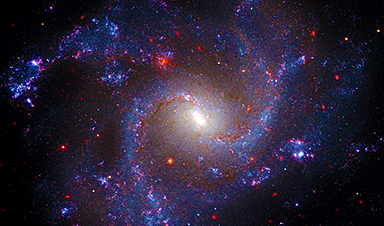A new biomarker test can detect early-stage tau protein clumping up to a decade before it appears on brain scans, improving early Alzheimer’s diagnosis. Unlike amyloid-beta, tau neurofibrillary tangles are directly linked to cognitive decline.
Years before tau tangles appear in brain scans of Alzheimer’s patients, a biomarker test developed by the University of Pittsburgh School of Medicine can detect small amounts of tau protein prone to clumping, along with its misfolded pathological forms in the brain, cerebrospinal fluid, and possibly blood, according to new research published in Nature Medicine.
This cerebrospinal fluid test correlates with cognitive decline severity, independent of factors such as brain amyloid deposition, offering a potential pathway for early diagnosis and intervention.
Since amyloid-beta abnormalities typically emerge before tau pathology in Alzheimer’s disease, most biomarker research has prioritized detecting amyloid-beta changes. However, the clumping of tau protein into well-ordered structures referred to by pathologists as “neurofibrillary tangles” is a more defining event for Alzheimer’s disease as it is more strongly associated with the cognitive changes seen in affected people.
“Our test identifies very early stages of tau tangle formation – up to a decade before any tau clumps can show up on a brain scan,” said senior author Thomas Karikari, Ph.D., assistant professor of psychiatry at Pitt. “Early detection is key to more successful therapies for Alzheimer’s disease since trials show that patients with little-to-no quantifiable insoluble tau tangles are more likely to benefit from new treatments than those with a significant degree of tau brain deposits.”
The Need for a More Reliable Tau Biomarker
Since many elderly people who have amyloid-beta plaques in their brains will never go on to develop cognitive symptoms of Alzheimer’s disease during their lifetime, the widely adopted diagnostics framework developed by the Alzheimer’s Association specifies the three neuropathological pillars necessary to diagnose the disease – combined presence of tau and amyloid-beta pathology and neurodegeneration.
In a quest for early and accessible biomarkers for Alzheimer’s disease, Karikari’s earlier work showed that a brain-specific form of tau, called BD-tau, can be measured in blood and reliably indicate the presence of Alzheimer’s disease-specific neurodegeneration. Several years prior, Karikari showed that specific forms of phosphorylated tau, p-tau181, p-tau217, and p-tau212, in the blood can predict the presence of brain amyloid-beta without the need for costly and time-consuming brain imaging.
But these tools largely detect amyloid pathology, so the issue of early detection of tau still looms large. While tau-PET remains a reliable and accurate predictor of tau burden in the brain, the test’s utility is limited by availability, low resolution, high cost, labor, and sensitivity. At present, tau-PET scans can pick up the signal from neurofibrillary tangles only when a large number are present in the brain, at which point the degree of brain pathology has become pronounced and is not easily reversible.
A Breakthrough in Early Tau Detection
In this latest research, using the tools of biochemistry and molecular biology, Karikari and team identified a core region of the tau protein that is necessary for neurofibrillary tangle formation. Detecting sites within that core region of 111 amino acids, a sequence they call tau258-368, can identify clumping-prone tau proteins and help initiate further diagnostics and early treatment. In particular, the two new phosphorylation sites, p-tau-262 and p-tau-356, can accurately inform the status of early-stage tau aggregation that, with an appropriate intervention, could potentially be reversed.
“Amyloid-beta is a kindling, and tau is a matchstick. A large percentage of people who have brain amyloid-beta deposits will never develop dementia. But once the tau tangles light up on a brain scan, it may be too late to put out the fire and their cognitive health can quickly deteriorate,” said Karikari. “Early detection of tangle-prone tau could identify the individuals who are likely to develop Alzheimer’s-associated cognitive decline and could be helped with new generation therapies.”
Reference: “Phospho-tau serine-262 and serine-356 as biomarkers of pre-tangle soluble tau assemblies in Alzheimer’s disease” by Tohidul Islam, Emily Hill, Eric E. Abrahamson, Stijn Servaes, Denis S. Smirnov, Xuemei Zeng, Anuradha Sehrawat, Yijun Chen, Przemysław R. Kac, Hlin Kvartsberg, Maria Olsson, Emma Sjons, Fernando Gonzalez-Ortiz, Joseph Therriault, Cécile Tissot, Ivana Del Popolo, Nesrine Rahmouni, Abbie Richardson, Victoria Mitchell, Henrik Zetterberg, Tharick A. Pascoal, Tammaryn Lashley, Mark J. Wall, Douglas Galasko, Pedro Rosa-Neto, Milos D. Ikonomovic, Kaj Blennow and Thomas K. Karikari, 10 February 2025, Nature Medicine.
DOI: 10.1038/s41591-024-03400-0
This study was supported by, among others, the National Institute on Aging (grants R01AG083874, U24AG082930, P30AG066468, RF1AG052525-01A1, R01AG053952, R37AG023651, RF1AG025516, R01AG073267, R01AG075336, R01AG072641, P01AG14449, and P01AG025204, among others), the Swedish Research Council (grant 2021-03244), the Alzheimer’s Association (grant AARF-21-850325), the Swedish Alzheimer Foundation, the Aina (Ann) Wallströms and Mary-Ann Sjöbloms Foundation, the Emil and Wera Cornells Foundation and a professorial endowment fund from the Department of Psychiatry, University of Pittsburgh.
News
Measles Is Back: Doctors Warn of Dangerous Surge Across the U.S.
Parents are encouraged to contact their pediatrician if their child has been exposed to measles or is showing symptoms. Pediatric infectious disease experts are emphasizing the critical importance of measles vaccination, as the highly [...]
AI at the Speed of Light: How Silicon Photonics Are Reinventing Hardware
A cutting-edge AI acceleration platform powered by light rather than electricity could revolutionize how AI is trained and deployed. Using photonic integrated circuits made from advanced III-V semiconductors, researchers have developed a system that vastly [...]
A Grain of Brain, 523 Million Synapses, Most Complicated Neuroscience Experiment Ever Attempted
A team of over 150 scientists has achieved what once seemed impossible: a complete wiring and activity map of a tiny section of a mammalian brain. This feat, part of the MICrONS Project, rivals [...]
The Secret “Radar” Bacteria Use To Outsmart Their Enemies
A chemical radar allows bacteria to sense and eliminate predators. Investigating how microorganisms communicate deepens our understanding of the complex ecological interactions that shape our environment is an area of key focus for the [...]
Psychologists explore ethical issues associated with human-AI relationships
It's becoming increasingly commonplace for people to develop intimate, long-term relationships with artificial intelligence (AI) technologies. At their extreme, people have "married" their AI companions in non-legally binding ceremonies, and at least two people [...]
When You Lose Weight, Where Does It Actually Go?
Most health professionals lack a clear understanding of how body fat is lost, often subscribing to misconceptions like fat converting to energy or muscle. The truth is, fat is actually broken down into carbon [...]
How Everyday Plastics Quietly Turn Into DNA-Damaging Nanoparticles
The same unique structure that makes plastic so versatile also makes it susceptible to breaking down into harmful micro- and nanoscale particles. The world is saturated with trillions of microscopic and nanoscopic plastic particles, some smaller [...]
AI Outperforms Physicians in Real-World Urgent Care Decisions, Study Finds
The study, conducted at the virtual urgent care clinic Cedars-Sinai Connect in LA, compared recommendations given in about 500 visits of adult patients with relatively common symptoms – respiratory, urinary, eye, vaginal and dental. [...]
Challenging the Big Bang: A Multi-Singularity Origin for the Universe
In a study published in the journal Classical and Quantum Gravity, Dr. Richard Lieu, a physics professor at The University of Alabama in Huntsville (UAH), which is a part of The University of Alabama System, suggests that [...]
New drug restores vision by regenerating retinal nerves
Vision is one of the most crucial human senses, yet over 300 million people worldwide are at risk of vision loss due to various retinal diseases. While recent advancements in retinal disease treatments have [...]
Shingles vaccine cuts dementia risk by 20%, new study shows
A shingles shot may do more than prevent rash — it could help shield the aging brain from dementia, according to a landmark study using real-world data from the UK. A routine vaccine could [...]
AI Predicts Sudden Cardiac Arrest Days Before It Strikes
AI can now predict deadly heart arrhythmias up to two weeks in advance, potentially transforming cardiac care. Artificial intelligence could play a key role in preventing many cases of sudden cardiac death, according to [...]
NanoApps Medical is a Top 20 Feedspot Nanotech Blog
There is an ocean of Nanotechnology news published every day. Feedspot saves us a lot of time and we recommend it. We have been using it since 2018. Feedspot is a freemium online RSS [...]
This Startup Says It Can Clean Your Blood of Microplastics
This is a non-exhaustive list of places microplastics have been found: Mount Everest, the Mariana Trench, Antarctic snow, clouds, plankton, turtles, whales, cattle, birds, tap water, beer, salt, human placentas, semen, breast milk, feces, testicles, [...]
New Blood Test Detects Alzheimer’s and Tracks Its Progression With 92% Accuracy
The new test could help identify which patients are most likely to benefit from new Alzheimer’s drugs. A newly developed blood test for Alzheimer’s disease not only helps confirm the presence of the condition but also [...]
The CDC buried a measles forecast that stressed the need for vaccinations
This story was originally published on ProPublica, a nonprofit newsroom that investigates abuses of power. Sign up to receive our biggest stories as soon as they’re published. ProPublica — Leaders at the Centers for Disease Control and Prevention [...]





















